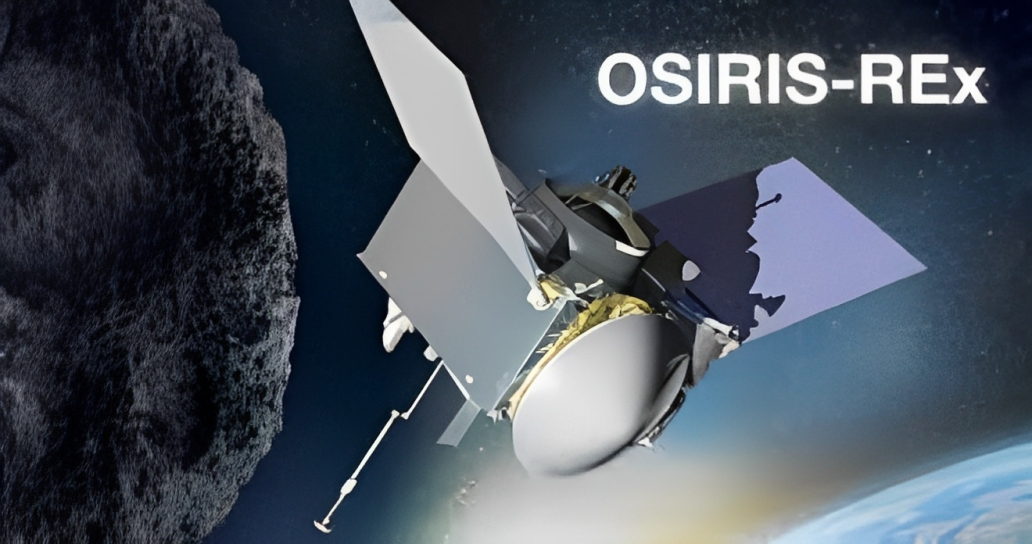Description

Copyright infringement not intended
Context: The OSIRIS-REx spacecraft, which collected a sample from asteroid Bennu last year, has successfully executed a critical manoeuvre that will bring it closer to Earth. On July 26, the spacecraft fired its thrusters for about 63 seconds, changing its speed and direction by 2.09 kilometres per hour. This small but essential adjustment will enable the spacecraft to intersect with Earth's orbit and deliver its valuable cargo - a piece of the ancient asteroid.
Details
- OSIRIS-REx (Origins, Spectral Interpretation, Resource Identification, Security, Regolith Explorer) is a NASA spacecraft mission designed to study the near-Earth asteroid Bennu.
- Bennu is a carbon-rich asteroid that is believed to be a remnant of the early solar system. It is also potentially hazardous, as it has a small chance of impacting Earth in the late 22nd century.
- By studying Bennu, scientists hope to learn more about the origin and evolution of our solar system, as well as the resources and risks of near-Earth asteroids.
- The spacecraft was launched in September 2016, and it arrived at Bennu on December 2018.
- OSIRIS-REx spent over two years orbiting and mapping Bennu, using a suite of instruments to characterize its shape, size, composition, surface features, and rotation. The spacecraft also performed a series of daring manoeuvres to touch down on the asteroid's surface and collect a sample using a robotic arm.

Key Objectives of the Mission
Sample Collection
- The primary objective of Osiris-Rex is to collect at least 60 grams of pristine regolith (loose rocks and dust) from the surface of Bennu using a robotic arm called the Touch-And-Go Sample Acquisition Mechanism (TAGSAM).
- The spacecraft will approach the asteroid at a low speed and briefly touch the surface with the TAGSAM head, which will release a burst of nitrogen gas to stir up and capture the regolith. The spacecraft will then store the sample in a capsule for return to Earth.
Studying bennu's Composition
- To characterize Bennu's surface, composition, mineralogy, and shape using a suite of instruments onboard the spacecraft. These include cameras, spectrometers, a laser altimeter, and a radio science experiment. The instruments will map Bennu's geology, chemistry, morphology, and thermal properties, as well as identify potential sample sites and hazards.
Understanding Asteroid Properties
- To improve our knowledge of the physical and orbital properties of near-Earth asteroids, especially those that are potentially hazardous to Earth. Bennu has a 1 in 2700 chance of impacting the Earth in the late 22nd century, according to current estimates.
- Osiris-Rex will measure Bennu's mass, density, spin rate, spin axis, and gravitational field, as well as monitor its non-gravitational forces such as solar radiation pressure. These data will help refine Bennu's orbit and impact probability, as well as inform future asteroid impact mitigation strategies.
Sample Return to Earth
- To bring back the sample collected from Bennu to Earth for further analysis. The spacecraft will depart from Bennu in May 2021 and begin its two-year journey back to Earth. The sample return capsule will separate from the spacecraft and enter the Earth's atmosphere in September 2023. It will land with a parachute in the Utah Test and Training Range, where it will be retrieved and transported to NASA's Johnson Space Center for curation and distribution.
Conclusion
- The OSIRIS-REx mission is not only a scientific endeavour but also a technological feat. It is the first U.S. mission to return a sample from an asteroid, and the largest sample returned from space since the Apollo era. It is also the first mission to orbit and sample a near-Earth asteroid, and the first to use optical navigation to manoeuvre around a small celestial body.
Must Read Articles:
NASA’s OSIRIS-REx: https://www.iasgyan.in/daily-current-affairs/nasas-osiris-rex
|
PRACTICE QUESTION
Q. What is the primary objective of the OSIRIS-REx mission?
1. To study the Martian atmosphere
2. To collect a sample from the asteroid Bennu
3. To study the rings of Saturn
4. To search for signs of life on Europa
How many of the above statements is/are correct?
A) Only 1
B) Only 2
C) Only 3
D) All
Answer: A
Explanation: The main goal of the OSIRIS-REx mission is to collect a pristine sample of regolith (loose surface material) from the near-Earth asteroid Bennu and return it to Earth for further analysis.
|
.jpg)
https://www.indiatoday.in/science/story/osiris-rex-adjusts-course-to-get-closer-to-earth-with-asteroid-samples-2412612-2023-07-27











